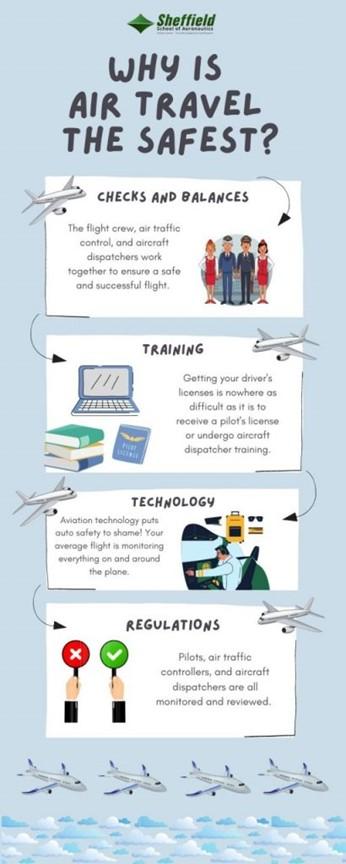Max, a lively golden retriever, was the pride of his family. His toy box overflowed with squeaky balls, plush animals, and chew toys. But as the days passed, Max became increasingly anxious, unable to focus during playtime. His owners noticed he would dart from one toy to another, overwhelmed and restless. Research shows that too many toys can overstimulate dogs, leading to stress and confusion. Simplifying Max’s toy collection not only calmed him but also deepened their bond. Sometimes, less truly is more for our furry friends.
Contents
- Understanding Canine Overstimulation and Its Effects on Behavior
- Identifying Signs of Overstimulation in Your Dog
- Creating a Balanced Toy Environment for Optimal Play
- Implementing Effective Strategies to Manage Toy Overload
- Q&A
Understanding Canine Overstimulation and Its Effects on Behavior
Dogs, much like humans, can experience sensory overload, particularly when surrounded by an abundance of stimuli. When it comes to toys, the sheer number available can lead to confusion and anxiety rather than joy. A dog faced with too many options may struggle to focus, leading to frustration and a lack of engagement with any single toy. This can manifest in behaviors such as excessive barking, pacing, or even destructive tendencies as they attempt to cope with the overwhelming environment.
Moreover, the effects of overstimulation can extend beyond mere playtime. Dogs thrive on routine and predictability, and an excess of toys can disrupt their sense of security. When a dog is unable to settle down or choose a toy, it may lead to increased stress levels. This heightened state of anxiety can result in physical symptoms, including panting, drooling, or even gastrointestinal issues. Understanding these signs is crucial for pet owners who want to ensure their furry friends remain happy and healthy.
To mitigate the risk of overstimulation, it’s essential to curate a selection of toys that cater to your dog’s preferences and needs. Consider the following strategies:
- Rotate Toys: Instead of offering all toys at once, rotate them weekly to keep your dog engaged without overwhelming them.
- Observe Preferences: Pay attention to which toys your dog enjoys the most and prioritize those in their playtime.
- Limit Options: Start with a few toys and gradually introduce new ones, allowing your dog to adjust to each addition.
Ultimately, the goal is to create a balanced play environment that fosters joy and engagement without leading to overstimulation. By being mindful of the number and type of toys available, pet owners can help their dogs maintain a sense of calm and focus. This not only enhances their play experience but also contributes to their overall well-being, ensuring that playtime remains a positive and enriching part of their daily routine.
Identifying Signs of Overstimulation in Your Dog
Understanding your dog’s behavior is crucial in ensuring their well-being, especially when it comes to recognizing when they are overstimulated. One of the first signs to look for is **hyperactivity**. If your dog is bouncing around, unable to settle down, or constantly seeking attention, it may indicate that they are overwhelmed by their environment or the number of toys available to them.
Another key indicator is **excessive barking or whining**. While vocalizations are a normal part of canine communication, an increase in these sounds can signal that your dog is feeling anxious or overstimulated. Pay attention to the context; if your dog is surrounded by toys and still vocalizing, it might be time to reassess their play environment.
Physical signs can also provide insight into your dog’s mental state. Look for **panting, drooling, or pacing**. These behaviors often suggest that your dog is stressed or unable to cope with the stimulation around them. If you notice these signs, it’s essential to create a calmer environment by reducing the number of toys or distractions.
Lastly, consider your dog’s **interest level** in their toys. If they seem to ignore their favorite items or show little enthusiasm for play, it could be a sign of overstimulation. A dog that is overwhelmed may not engage with toys as they normally would, indicating a need for a more balanced and serene playtime experience.
Creating a Balanced Toy Environment for Optimal Play
Creating a harmonious play environment for your dog is essential for their mental and emotional well-being. When it comes to toys, less can often be more. A carefully curated selection of toys can stimulate your dog’s mind without overwhelming them. By focusing on quality over quantity, you can ensure that each toy serves a specific purpose, whether it’s for chewing, fetching, or interactive play.
Consider rotating your dog’s toys to maintain their interest and excitement. Instead of leaving all toys accessible at once, try keeping some stored away and introducing them gradually. This method not only prevents overstimulation but also makes old toys feel new again. Dogs thrive on novelty, and rotating toys can keep their playtime engaging and mentally stimulating.
In addition to variety, it’s crucial to provide a range of toy types to cater to different play styles. Incorporate toys that encourage different forms of play, such as:
- Interactive toys that challenge your dog’s problem-solving skills.
- Chew toys that promote dental health and satisfy their natural urge to chew.
- Fetch toys that encourage physical activity and bonding time with you.
- Comfort toys that provide emotional support during quiet moments.
Lastly, observe your dog’s behavior and preferences closely. Each dog is unique, and understanding their individual play style can help you tailor their toy environment effectively. If you notice signs of stress or disinterest, it may be time to reassess the number and type of toys available. By fostering a balanced toy environment, you can enhance your dog’s play experience, ensuring it remains a source of joy and enrichment rather than a source of stress.
Implementing Effective Strategies to Manage Toy Overload
Managing toy overload in dogs is essential for their mental and emotional well-being. A cluttered environment can lead to confusion and anxiety, making it difficult for your furry friend to focus on playtime. To create a more balanced atmosphere, consider implementing a rotating toy system. This involves keeping a selection of toys accessible while storing the rest away. By regularly swapping toys, you can maintain your dog’s interest and excitement, preventing them from feeling overwhelmed by too many choices.
Another effective strategy is to categorize toys based on their purpose. For instance, you can group toys into categories such as **interactive**, **chew**, and **fetch**. This organization not only simplifies playtime but also helps your dog understand what each toy is meant for. When your dog knows what to expect from each toy, they are less likely to become overstimulated. Additionally, you can introduce new toys gradually, allowing your dog to adjust to each one before adding more to the mix.
Incorporating structured playtime into your dog’s routine can also mitigate the effects of toy overload. Designate specific times for play, ensuring that your dog engages with their toys in a focused manner. This can include scheduled fetch sessions, puzzle-solving activities, or even training exercises that utilize their toys. By establishing a routine, you help your dog develop a sense of security and predictability, which can reduce feelings of overwhelm and anxiety.
Lastly, pay attention to your dog’s behavior and preferences. Every dog is unique, and understanding what toys they enjoy most can guide your decisions on which toys to keep in rotation. Observe their play habits and take note of any signs of stress or disinterest. By being attuned to your dog’s needs, you can create a tailored toy management strategy that fosters a positive and engaging play environment, ultimately enhancing their overall happiness and well-being.
Q&A
-
Can too many toys overwhelm my dog?
Yes, an excess of toys can overwhelm a dog, leading to confusion and stress. Dogs thrive in environments where they can focus, and too many choices can create anxiety rather than enjoyment.
-
What are the signs of overstimulation in dogs?
Signs of overstimulation include excessive barking, pacing, inability to settle down, and destructive behavior. If your dog exhibits these behaviors, it may be time to reduce the number of toys available.
-
How can I determine the right number of toys for my dog?
Start with a few toys that cater to different play styles, such as chew toys, fetch toys, and puzzle toys. Observe your dog’s preferences and rotate toys regularly to keep their environment engaging without overwhelming them.
-
What are the benefits of limiting toys for my dog?
Limiting toys can enhance your dog’s focus and enjoyment during playtime. It encourages them to engage more deeply with their toys, leading to better mental stimulation and a more satisfying play experience.
while toys can enrich a dog’s life, moderation is key. Too many options can lead to overstimulation and anxiety. By curating a balanced selection of toys, you can ensure your dog remains happy, focused, and mentally healthy. Choose wisely!

大家好,我是彼得潘,專業的手法身體治療師。我喜歡探索和研究各種主題,並透過與人工智慧的合作分享專業、實用、有趣的文章。我們定期進行人工審核,以確保內容的準確性。如果您發現文章中有任何不準確的地方,請隨時與我們聯繫,我們會及時糾正。您可以透過 [email protected] 與我們聯繫。



